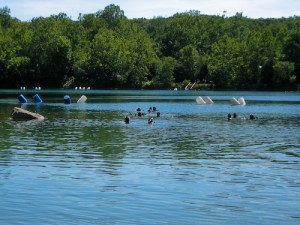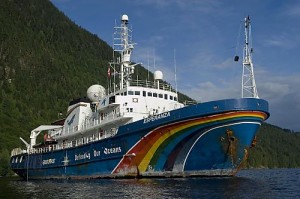Esperanza Sets Sail from Dutch Harbor: Bering Sea Expedition Under Way

DeepWorker submarines aboard Esperanza as the ship heads north into the Bering Sea, leaving the Aleutians behind. (Photo by David E. Guggenheim)
The Expedition to the Bering Sea officially got under way as the M/V Esperanza departed Dutch Harbor, Alaska on Friday, July 27 at 4pm Alaska Daylight Time. The Esperanza will steam through the night — for roughly 15 hours — to its first destination, Pribolof Canyon near the Pribolof Islands in the Bering Sea. The first DeepWorker dives are scheduled for Saturday morning.
In June, an international team of researchers and conservation specialists recently completed a week of intensive training and preparations for this Greenpeace-led expedition to Alaska’s Bering sea. The Esperanza is carrying two manned submersibles, a remotely-operated vehicle (ROV) and the research team to the Bering Sea for a three week survey of Zhemchug and Pribilof Canyons, specifically to map and document deepwater corals living at depths of more than 1,000 feet. Read more


guggenheim.gif) Last week, Mirriam-Webster’ announced that it was adding the word, “
Last week, Mirriam-Webster’ announced that it was adding the word, “
